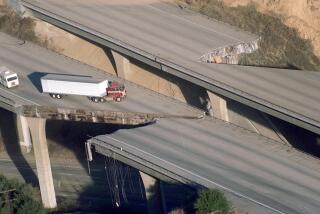How the American West was made -- a new view of plate tectonics
It’s long been held that North America’s rugged and mountainous west was formed by the movement of the undersea Farallon plate, and that the process was roughly similar to the way groceries pile up at the end of a supermarket conveyor belt.
Millions of years ago, when the lands of present-day Nevada and Utah were oceanfront properties, the Farallon tectonic plate began sliding eastward beneath the continent, dragging island chains along with it until they smashed into, and accreted, along the west coast, scientists said.
Now however, a study published Wednesday in the journal Nature argues that the process involved not just one but several plates that remain hidden deep within in the Earth’s mantle.
Scientists at Ludwig Maximilians University in Munich and the British Columbia Geological Survey used earthquake shockwaves, or seismic tomography, to create a three-dimensional map of these massive plate relics, which have sunk 500 to 1,200 miles beneath the Earth’s surface.
The plate slabs, according to lead author and geophysicist Karin Sigloch, resemble near-vertical walls, hundreds of feet thick.
“The largest wall runs from northwest Canada to the eastern U.S.A. and on to Central America, and has been called the Farallon slab, one of the most massive features in global tomographies,” authors wrote.
“We argue that in fact most of this slab wall is not Farallon and subdivide it into the Angayucham, Mezcalera and the Southern Farallon components.”
The authors propose that the newly named Angayucham and Mezcalera plates may have existed beneath long-vanished seas that were sandwiched, and overrun, by a westward-moving North American plate and eastward-moving Farallon plates.
While the new study provides some answers for the jumble of land masses that make up the North American west, it does not explain every piece of the jigsaw puzzle and further study was needed, authors said.
“Poorly understood, such collisions are of broad scientific interest,” authors wrote. “They cause rapid geographic changes, affecting climate, ocean circulation, biota and the formation of economically important mineral deposits.”







